Chemical-based pesticides can reduce aspects of crop soil quality and nutrition when used in high proportions. Thus, organic pesticides come into play because they are nature-based and chemical substances, but when used in small quantities, they are not toxic to the environment. Using pesticides in the garden is the most effective way to take care of the problems of annoying pests. Let’s check out when to apply organic pesticides in your garden below.
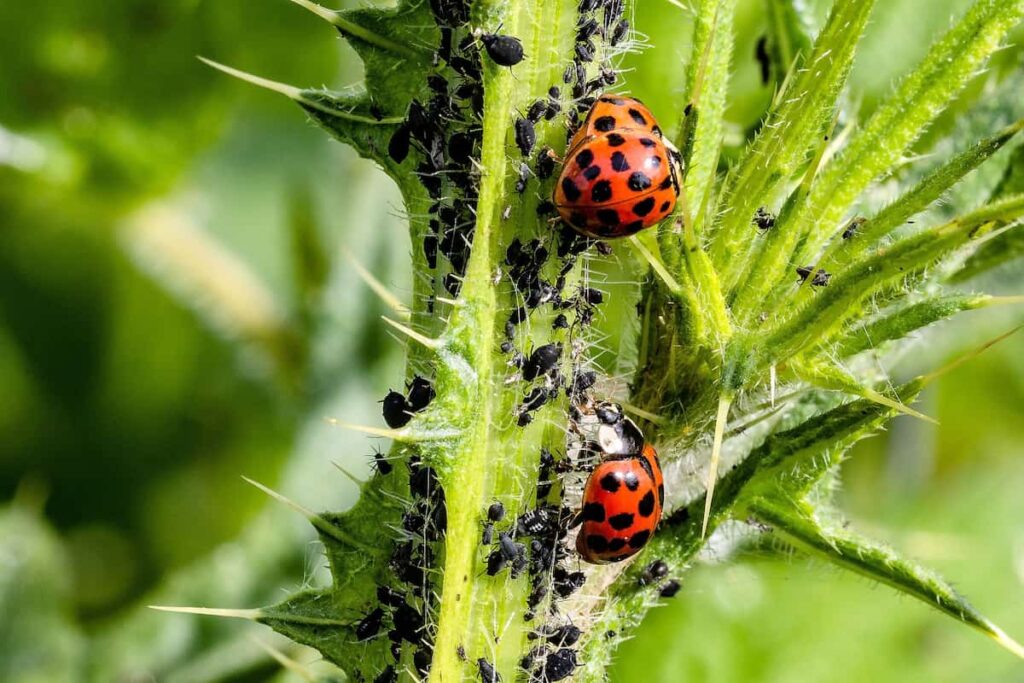
There are many different types of garden pesticides that meet many different needs. Good timing is essential for successful plant pest and disease control. Whether you’re fighting caterpillars or fire blight, aphids, or fungi, the practical application of controlled chemicals depends on learning how to coordinate spraying with plant growth stages.
Each pesticide use has its timetable, but within this schedule, the best way to maximize effectiveness is to use chemicals at the right time of day. Whether you have houseplants, veggie patches, flower gardens, or a little bit of everything, healthy plants aren’t easy prey to proper water, fertilizer, pruning, and mulching that maintain plant strength and prevent pests. There are many ways to go organic, synthetic or a combination of both, and you should know when and how to use it.
when to apply organic pesticides in your garden
Types of pesticides
- Herbicides – Herbicides inhibit the growth of weeds that can eliminate the nutrients needed to grow crops.
- Insecticides – Insecticides attack the nervous system of insects to restrict their inhibition or breeding.
- Fungicides – Fungicides help prevent the growth of fungi and help to remove them altogether.
- Rodenticides – These chemicals control the inhibition of rats, mice, gophers, fish, birds, and mammals that can destroy crops.
In case you missed it: Neem Oil Pesticide Formulation for Garden Plants
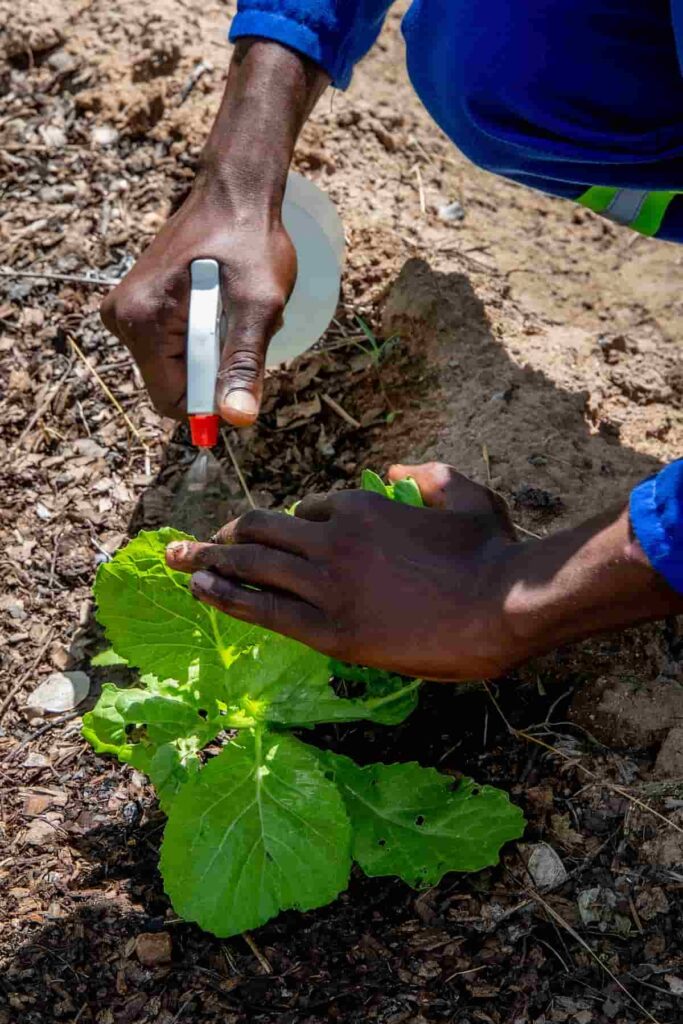
- Larvicides – Larvicides are pesticides that control or limit the growth of larvae or mosquitoes or restart their reproduction to prevent vector-borne diseases such as malaria.
- Molluscicides – Pesticides that typically limit the inhibition or spread of snails, slugs, and others.
- Bactericides – Pesticides kill or limit the spread of harmful bacteria in crops and livestock.
- Algaecides – These pesticides kill or limit algae growth for better crop yields.
How to use pesticides properly
- Never apply pesticides on windy days or when the winds are strong or variable in direction. You should use coarse droplet nozzles on your sprayer to reduce misting. Spray as close to the target as possible. With temperatures above 32°C, do not use pesticides on hot days. Active ingredients in some pesticides can evaporate and flow to non-target surfaces.
- Do not overuse pesticides. Excessive use can eliminate pesticides or seep into the water supply and contaminate them. It is difficult or impossible to clean the water sources once contaminated. Excess spray can leave harmful residues on your homemade fruits and vegetables, affecting other plants, wildlife, and fish. Read labels to determine whether the pesticide should be watered by irrigation.
- Never mix or apply pesticides near wellheads, stormwater drains, or streams. You should keep pesticides away from plants and wildlife you don’t want to treat. Some pesticides are toxic to pollinators, so you should read the label carefully to determine if there are application times or other restrictions. When treating trees, do not spray bird nests. Cover outdoor ornamental fish pond.
- Decide whether the pesticide is necessary before spraying. The situation of each insect varies by severity and location. Anything that can’t be solved manually, such as removing from your fingers or in a firm spray from a garden. First, identify the culprit and what kind of pest to pick up your poison. It is essential to know the enemy to choose a pesticide. All labels clearly state what the target of the product is. Some sprays can treat only one or two types of insects, while others attack many insects. Spray pesticides at the right time of year. Time is everything when it comes to pesticides. Some insects respond to pesticides during certain life cycle stages.
- During the cooler part of the day, you should apply pesticides, such as in the morning or evening. Early morning treatments allow leaves to dry before temperatures reach 30°C to 32°C. Take special precautions while using oil-containing pesticides.
- Only add surfactants when recommended on the pesticide label. Avoid tank mixes. A combination of pesticides can increase the likelihood of injury to plants. Never use sprayers for pesticides that were previously used to apply herbicides. Apply pesticides only after irrigating the crops and show no moisture stress. You should not apply pesticides with fertilizer.
In case you missed it: How to Grow Mangosteen Fruit from Seed to Harvest: Check How this Guide Helps Beginners
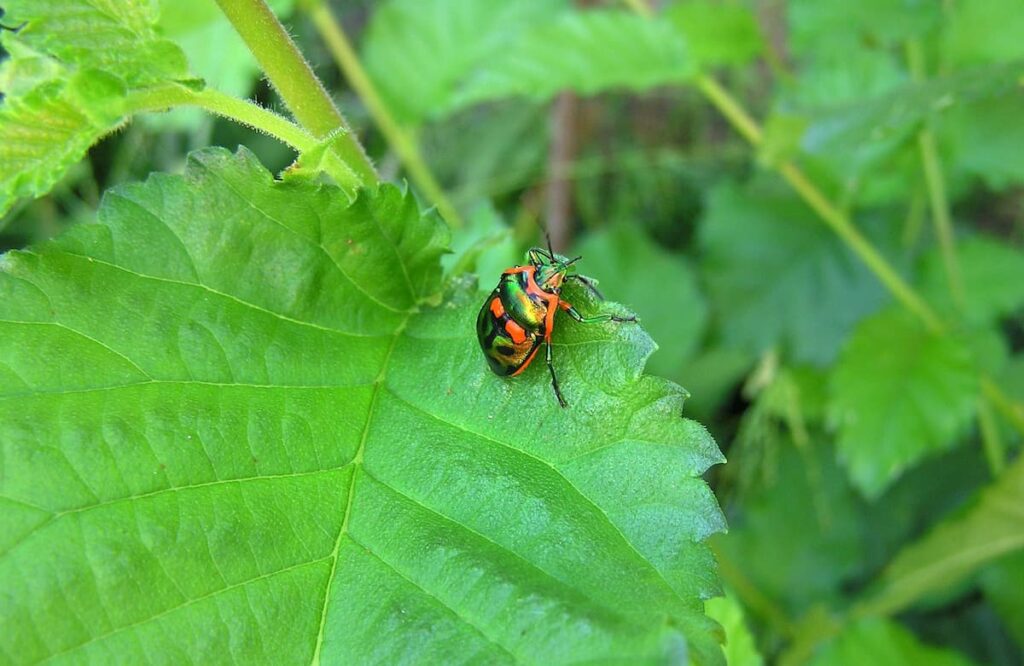
The best time to spray pesticides in your garden
- Just as plants absorb water early in the morning, they will absorb chemicals most effectively in the morning and evening. During these hours, the holes on plant leaves remain open and absorb water vapor and dew during the coldest times of the day.
- Another reason for spraying chemicals early in the morning or evening is that the air is more suitable than at other times of the day. Pesticide labels and plant professionals warn against spraying on windy days.
- Many insects are most active in the early morning and evening, making the most effective time for pesticide use in the early morning and early evening. Pesticides can have undesirable consequences if applied at the wrong time. Most garden professionals are in favor of both morning and evening hours.
- Pesticide sprays require 24 hours of drying time to maximize the benefits. This could mean automatically adjusting the water system or changing the water routinely to allow drying on the leaves. Ideally, spraying is done at the beginning of 24 rain-free hours. In humid climates, applying pesticides in the evening, thus keeping plant leaves wet at night, can increase the vulnerability of plants to disease. Drying time can also protect humans and animals from potential pesticide side effects caused by brushing or playing against bushes.
In case you missed it: Growing Forget-Me-Not Plants: A Guide to Propagation, Planting, and Care for Beginners
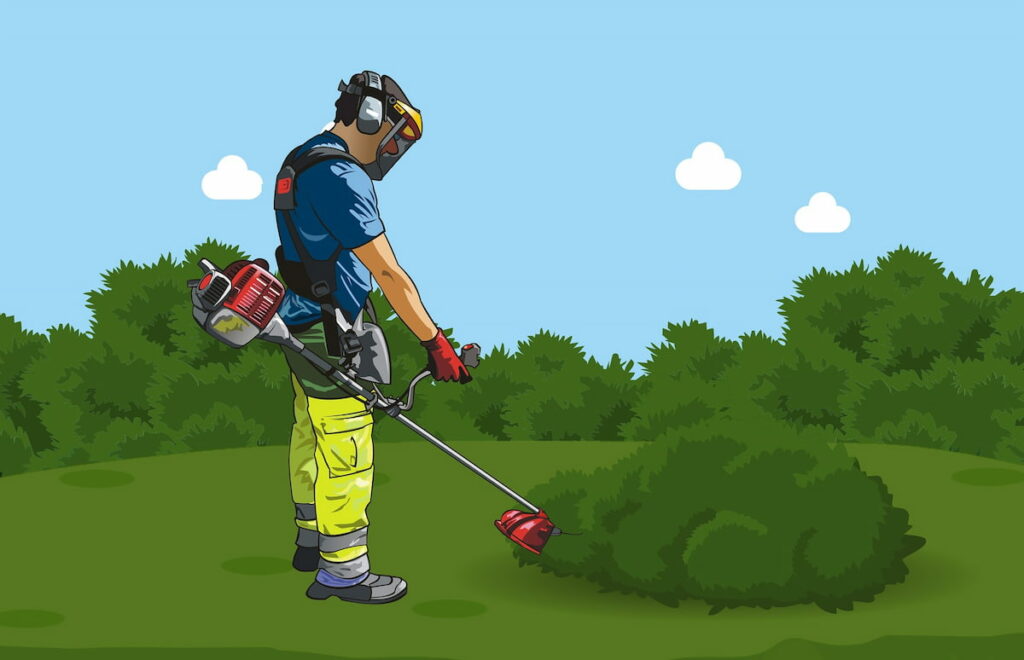
How often to spray pesticides on plants
- Rotate the pesticides with different modes of action. Unless otherwise directed to the pesticide label, you should switch to a pesticide with varying action modes about every 2 to 3 pest generations or every 2 to 3 weeks. Depending on the time of year, the length of pesticide rotation may change, as temperature and weather affect the length of insect life cycles.
- Use pesticides with non-specific modes of action whenever possible. Most synthetic and botanical pesticides kill insects and mites by affecting specific chemical pathways in pests. Both insecticidal soaps and horticultural oils have broad modes of action and, therefore, are unlikely to allow the development of resistance.
Organic pesticides
Dish soap spray
Dissolve one teaspoon of mild liquid soap, such as pure dish soap or castile soap, into 1-quarter of the water. Soap sprays only work when wet, so they’ll need to be reapplied every 4 to 7 days or until you know the population has decreased. After a few applications, spray the plants with plain water to clean up any soap residue if the rain hasn’t done that for you.
Oil spray
Mix 1 cup of vegetable oil with one tablespoon of mild liquid soap. Add 2 to 8 teaspoons of this mixture to 1-quarter of water and spray your plants as above. The oil in this spray smothers insects, so it’s effective on aphids, thrips, mites, and scales.
In case you missed it: India Fruit Planting Calendar: Month-wise Growing Chart, Gardening Schedule

Tomato leaf pesticide
Tomato leaves contain solanine and tomatine and can be used as a pesticide. Soak 2 cups of fresh leaves in a quarter of water overnight, then spray. It kills several types of aphids and chewing insects and attracts beneficial ones. Please do not use it on other nightshades, such as Eggplant, Pepper, or Potato,
Garlic repellent spray
Crush the two bulbs of garlic with 1 cup of water. It would help if you let them sit overnight. You should drain the liquid into the quart jar, add 1/2 cup of vegetable oil, and one teaspoon of liquid soap, and fill the jar with water the rest of the way. Pour a cup into a 1-quart sprayer, fill it with water and apply it to your infected plants. It’s suitable for removing aphids, cabbage bugs, leaf hoppers, squash bugs, and whiteflies.
Hot pepper repellent spray
Hot pepper is also an excellent repellent and works on rabbits, deer, and insects. Mix 1 tablespoon of dried chili powder, one teaspoon of water, and one teaspoon of mild soap. Spray full force on the plants under attack. Add a teaspoon of mild soap and spray full strength on the plants. When working with this spray, you may wear gloves and can make sure it won’t get in your eyes.
Eggshells
It’s a simple ingredient that most of us already have in our kitchen, so it’s worth a shot, especially if you live in a warm, damp area prone to slugs and snails.
In case you missed it: How to Grow Medicinal Plants in the Backyard: Medicinal Herb Gardening for Beginners
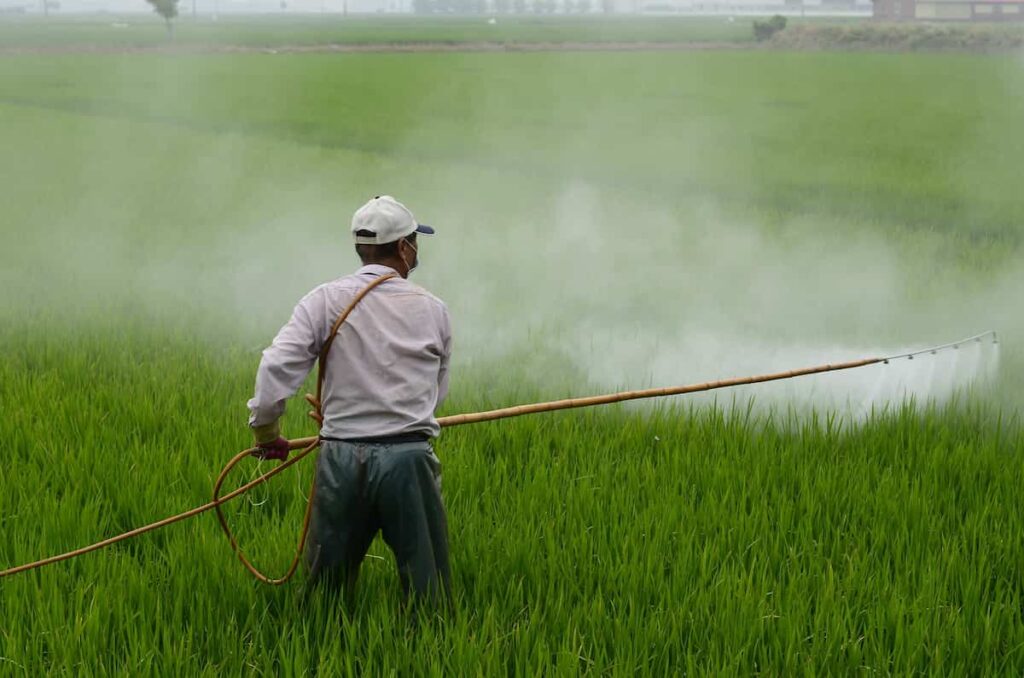
Neem oil
The main ingredient in neem oil is toxic to some bugs. Once they eat it, it disrupts their hormones, makes it difficult for them to lay new eggs, and suppresses their appetite until they eventually starve. You can spray it on your plants as a preventive measure or apply it where you see small, soft-bodied bugs.
Conclusion
Pesticides are an effective way to keep your garden pest-free when preventive measures aren’t working. When applying it, you must follow the correct procedure and practice the best. You should make sure your plants are growing in a healthy environment. This means providing plants with ideal conditions like good soil, proper drainage, plenty of light, repeated waterings and weeds, routine applications of compost and mulch, and drying wind. The best conditions for plant growth increase the chances of healthy plants being better equipped to withstand pest and disease attacks.
- How to Grow Tomatoes Organically at Home: A Comprehensive Guide
- Organic Gardening on a Budget: Low-Cost Methods and Materials
- Gongura Seed Germination and Planting Methods
- Cabbage Seed Germination and Selection
- Broccoli Seed Germination and Selection
- Asparagus Seed Germination and Variety Selection
- Seasonal Flower Gardening: Best Practices for Spring, Summer, Fall, and Winter
- How to Grow Hibiscus from Flower
- Plantation Ideas for Home Decoration: A Beginners Guide
- Flower Garden Designs and Layouts for Beginners
- Planting and Spacing Techniques in Papaya: A Beginner’s Guide
- Growing Gold: Essential Techniques for Planting Pineapples
- How to Make Kalanchoe Plant Bushy: Home Remedies and Solutions
- 11 Reasons Why Your Gardenia is Not Blooming: Home Remedies and Solutions
- Eco Elegance: The Guide to Designing a Drought-Tolerant Landscape
- Gardening on a Slope: Strategies for Hillside Landscaping
- Nourish and Flourish: Top Organic Mulches for Thriving House Plants
- Everything You Want to Know about Indian Mogra Flower: Discover Uses and Growing
- Green Thumb Success: Expert Tips for Cultivating Greenhouse Pumpkins All Year Round
- Maximize Growth & Flavor: The Ultimate Guide to Companion Planting in Herb Gardens
- How to Control Rhododendron Problems Naturally: Home Remedies and Organic Ways to Fix Them
- Natural Magic: The Remarkable Benefits of Cinnamon for Plants
- Best Steps to Revive Dying Tulip with Natural and Organic Treatment
- 10 Reasons Why Your Angel Trumpet is Not Blooming: Remedies and Treatment
- How to Fix Periwinkle Leaf and Flower-Related Problems: Natural Remedies and Solutions
- How to Fix Zinnias Leaf and Flower Problems: Discover Natural and Home Remedies
- Organic Steps to Induce Lemon Tree Flowers: A Comprehensive Guide
- Bloom Booster: Crafting the Perfect Homemade Bougainvillea Fertilizer
- Optimizing Growth: A Guide to Applying NPK Fertilizer for Potted Plants
- 10 Best Homemade Fertilizers for Rubber Plant: DIY Recipes and Application Method
- How to Boost Female Pumpkin Flowers: Effective Steps for More Flowers and High Yields
- Transform Your Indoor Garden: Top Benefits of Pink Salt for Houseplants
- 10 Best Homemade Fertilizers for Peacock Plants (Calathea): Easy DIY Guide
- Unlock Blooms: 9 Reasons Why Your Potted Chrysanthemum is Not Blooming
- 8 Reasons Why Your Potted Hibiscus is Not Blooming: Fix it with Simple Solutions
- Unlock Blooms: 9 Key Reasons Your Potted Frangipani Won’t Flower